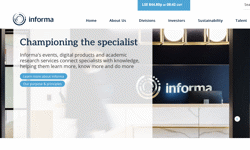
It is too easy to think about how we can adapt existing media businesses without considering how the technologies that have disrupted them have actually changed the attitudes and expectations of readers-users.
Think about it. The web gives B2B readers the opportunity to find out almost anything. Much of the information that once only publishers could supply is now at the fingertips of executives everywhere. The web helps domestic businesses become global. It helps them produce their own media. And they can be in constant contact with their staff, customers and suppliers.
The readers-users of B2B media, therefore, increasingly want and need something totally different.
I believe these changed expectations include the following:
1. Readers-users are increasingly aware of what information is exclusive and that which is freely available. Digital media (since iTunes) has trained customers to pay only for what they actually want. Many publishers insist on maintaining their traditional ‘all or nothing’ approach to readers even in digital format, simply because they fear that anything else might risk cannibalising the print sales on which they still depend. While ‘de-constructing’ the package may not be risk-free in the short-term, a failure to give customers the choice will be self-defeating in the long-term. Many publications have columnists, exclusive information and statistics which readers will value highly and pay for. In the consumer space, the New York Times now has more than 300,000 subscribers just for its daily crossword puzzle. B2B information companies must also develop exclusive, high-value information that people cannot get anywhere else.
2. Readers-users will, increasingly, be unwilling to accept advertising with paid-for content. Most information will either have to be principally paid-for by subscribers or by advertisers. Not both. This can become more critical in digital simply because – like it or not – it is easier to skip past a print ad than it is when the same ad is blocking a smartphone screen. Again, publishers which ignore this reality may risk being beaten by competitors which don’t have an existing business to defend. An email publication from Silicon Valley, The Information, shows what can be done. It has become soundly profitable by generating just two exclusive stories each day and by charging $400 for a subscription. It carries no advertising.
3. Readers-users are increasingly interested in the views of their peers. Technology gives the opportunity to get testimonials from people who have bought something or been somewhere before us and the same goes for businesses. This ‘practical networking’ will make B2B readers increasingly keen on becoming members of connected communities for benchmarking and even e-commerce. It’s why - in this virtual world - exhibitions, conferences and other events have thrived on bringing people together.
There’s plenty of opportunity – as long as B2B media focus on what the reader-user really needs and wants.










